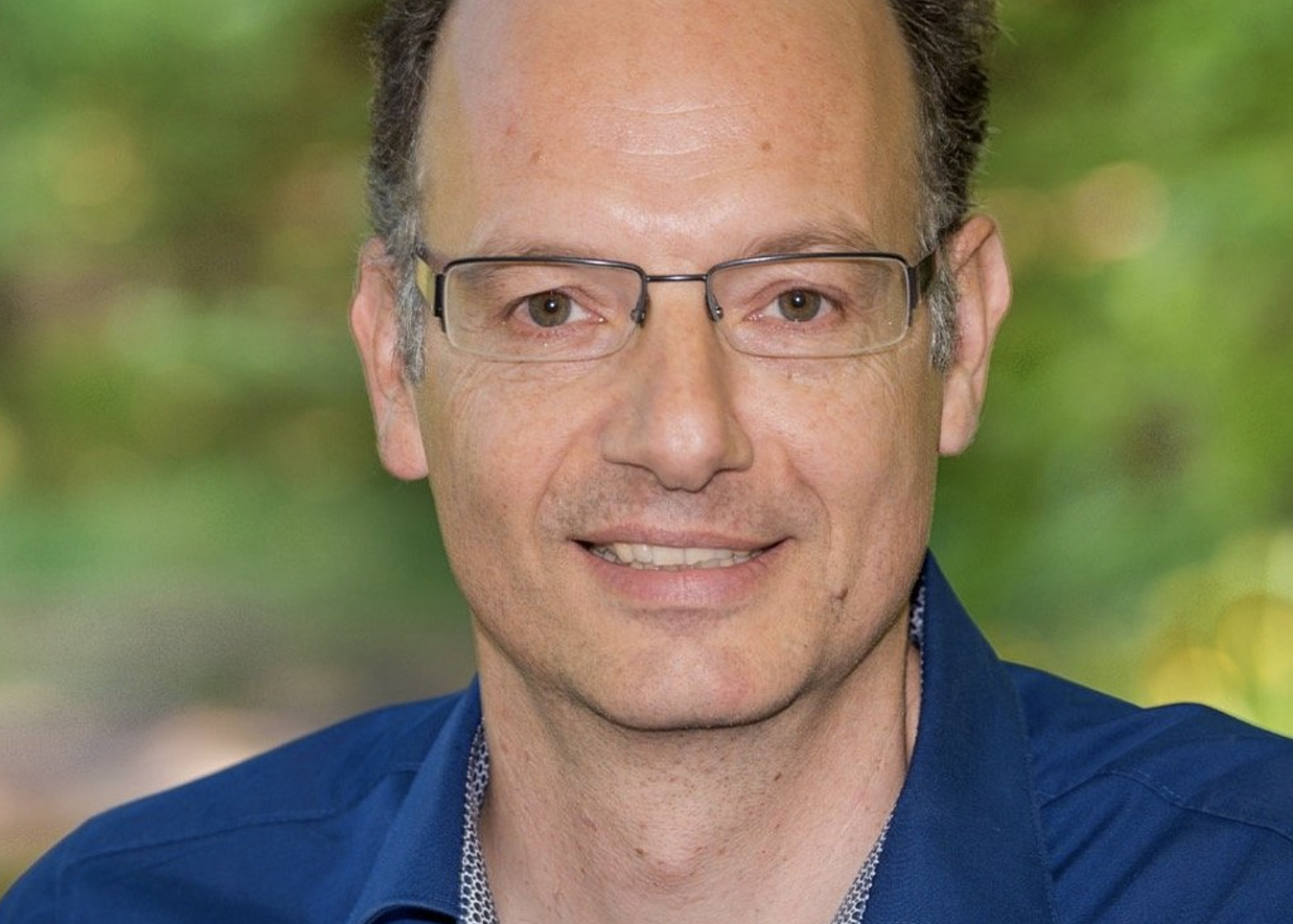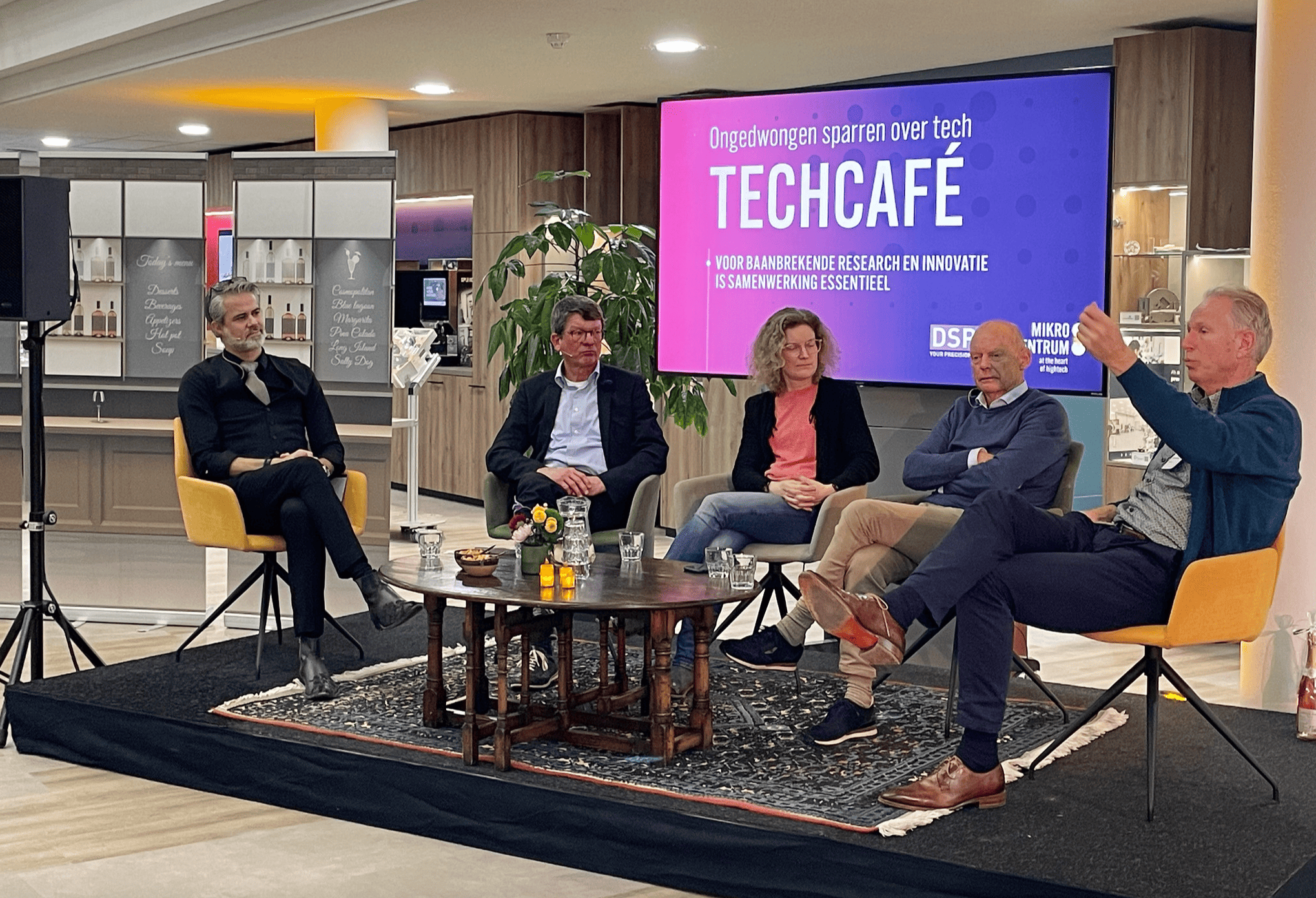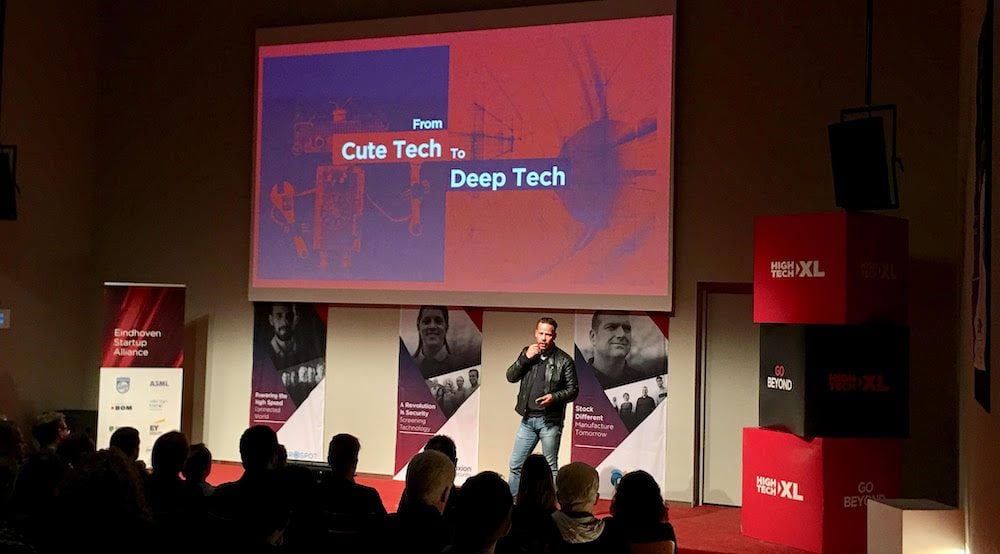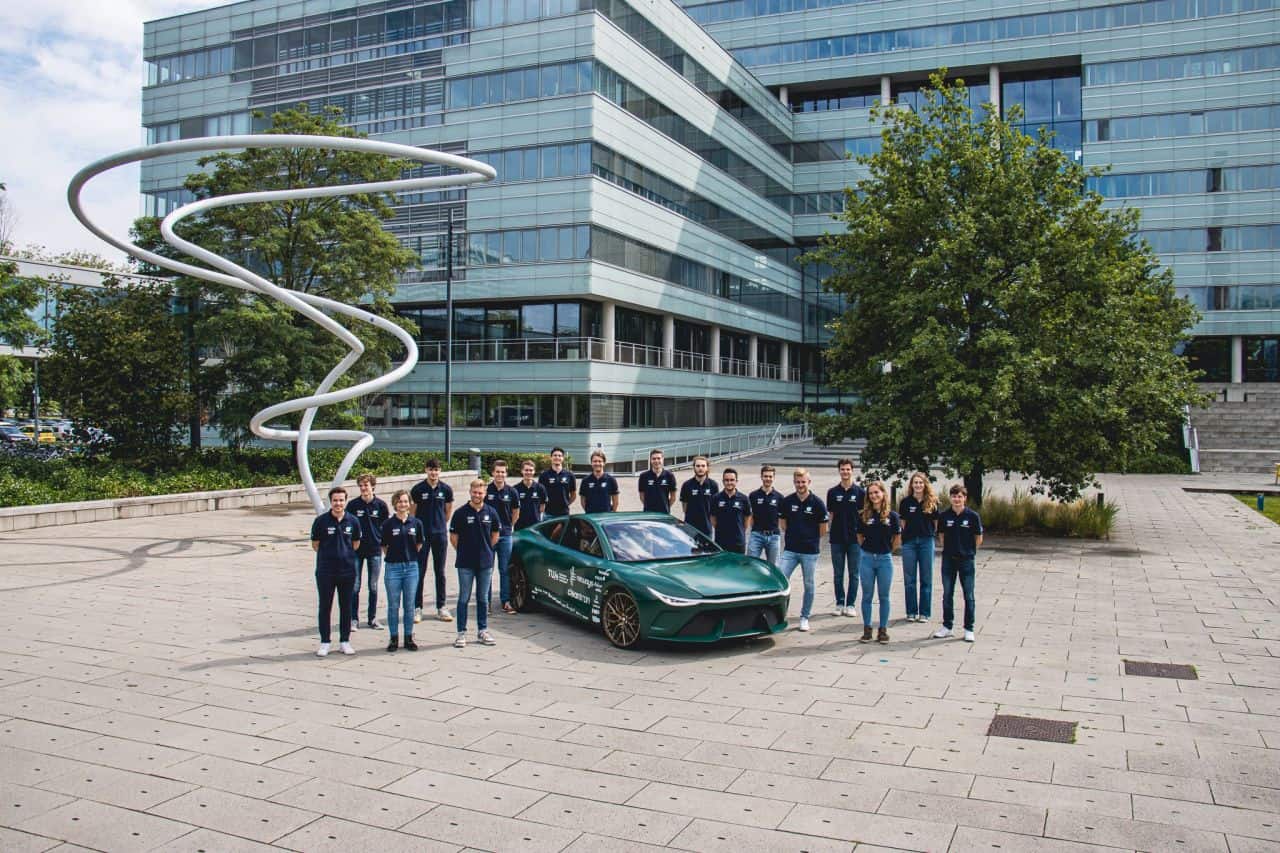
The five-legged sheep. That is how Jos de Klerk describes his role as a systems engineer at VDL ETG (Enabling Technologies Group). It’s a role that you acquire in the Brainport region mainly through years of experience. Ignacio Vazquez, who will become a part-time Teaching Assistant at MIT Boston in September, did not want to wait for years to be able to meet the increasingly complex demands of his clients. He searched for and eventually found the program System Design and Management (SDM) at MIT Boston. As a final project, he worked with three fellow students on an assignment at VDL ETG. There, he was supervised by De Klerk and Miranda van den Berg, a physical engineer at VDL ETG.
Vasquez’s experience in Boston makes it even more clear that Brainport Eindhoven would also be helped by a specific Systems Engineering training. A project has now been set in motion to investigate the feasibility of this goal. Especially for employees of smaller companies, this could be very important, but Vazquez’s example shows that it can also help the larger companies.
Read a previous series on systems engineering in Brainport here
Complex
As a consultant at TMC – where he worked until July – Vazquez noticed that his clients’ questions were becoming increasingly complex. They require knowledge of various technologies, but also of finance and marketing, for example. So Vazquez started his search. First within the Brainport region. “There were different parts of a Systems Engineering program, for example at the Eindhoven University of Technology. Separately, not as a whole. And they are intended for students, not professionals.” There were also no degree programs elsewhere in the Netherlands, so he diverted to Boston.
Vazquez took his bachelor’s degree in mechatronics in Mexico. Eight years ago, he came to Eindhoven to do his master’s in Automotive Technology at TU Eindhoven. As a consultant at TMC, he then worked for several clients for five years. He knows the area as a high-tech region, where companies cooperate a lot on increasingly complex issues. Issues that cannot be solved with one technology.
“Here you have to be lucky to come across someone who teaches you how to talk to different experts,” says Vazquez. Large companies such as ASML and VDL have in-house training, but “it’s especially necessary for smaller companies to talk to them as well. So that companies don’t ask a supplier to make a component, but have them develop a functionality.”
As a simple example, he cites sunglasses. “You can ask a supplier to make a leg of a pair of glasses of so many centimeters and from material that has a certain stiffness. But you can also name the function, that it should, for example, keep your hair out of your face. Then something completely different might come out of it.”
1000 options
The reason for his participation in the MIT program was a DAF Trucks project, in which he and his team had to estimate the CO2 emissions of the truck fleet. This required more technical knowledge than just mechatronics. Up to 1000 different options had to be assessed, not only technically but also legally, strategically, and financially. He taught himself to use trade space visualizations. It’s a kind of talking plate that shows all the options in a graph, set against the costs and the returns. This method of visualization would prove to be “the bread and butter” during his MIT studies.
Vazquez wanted to further develop his communication skills to work with others on complex problems. Within the project for VDL ETG, he worked with fellow students: Ryan Merrithew, a mechanical engineer from California, George Carrera, a physicist from California, and Bruce Hecht, an electrical engineer from Massachusetts. Because Vazquez, of the four, was the least versed in the specific technology, he took on the role of coordinator and facilitator: continuesly asking questions when things were too vague or knowing when to stop when things got too detailed.
Medical diagnostics
The project the MIT students worked on is supposed to result in a new X-ray machine, ‘SmartLight’. There are two types of X-ray machines: an X-ray machine that you find at your dentist’s office or in the hospital, and a very large one: a synchrotron. “There are maybe 20 of those worldwide. Such a device does give adjustable and intense X-rays, but it is very expensive and the measurement time is limited.” But there is a need for an affordable X-ray source with properties that come close to a synchrotron, De Klerk knows. “For example, in breast screening.” The results of a standard mammogram examination, done on women over 50, state that 4 out of 10 breast cancers are missed by the machine. “That’s a lot. The SmartLight system makes things visible that can’t be seen with MRI or a CT scan; it can start to greatly improve medical diagnostics.”

For De Klerk and Van den Berg, that’s the beauty of the project: “That you’re working on something that ultimately helps society. VDL ETG makes high-tech equipment on behalf of a paying customer. Especially to be able to move material in a fast, accurate, and clean way,” explains De Klerk. Among other things, the company supplies high-speed mechatronic subsystems to ASML and is active in the medical and analytical industries. “The X-ray project is a special one, though, because it does not involve mechatronics and there is, as yet, no customer. Nevertheless, we think it’s important to invest in this because this is where we want to go”, says De Klerk. “To design, develop, and market modules for high-end equipment ourselves. But that’s still a long way to go.” And one in which systems engineering plays an important role, no matter what.
Raising your hand
Even before his participation in the program in Boston, Vazquez sent an email last summer to Rutger van Poppel, project manager at Brainport Development. On LinkedIn, Van Poppel had shared an article about the High Tech Systems Center at the Eindhoven University, which combines mechanical engineering, electrical engineering, mathematics, computer science and applied physics. Vazquez also knew that from Brainport Development there had been a visit to MIT in Boston a few months earlier that year. “It was very logical to raise my hand and reach out to Rutger”, he says.
Van Poppel and Vazquez found each other and kept in touch. When a final project was due, Van Poppel sent a request to chip machine manufacturer ASML, Thermo Fisher, and VDL ETG, among others. De Klerk saw the value of using a project to discover what an MIT course like systems engineering could mean for this region.
De Klerk has been working at VDL ETG as a systems engineer since May of last year. Before that, he worked for 15 years as a systems engineer at ASML. At VDL ETG, the physicist by education has a number of projects under his belt. He also trains colleagues to become systems engineers. He noticed that the MIT students are very structured. “That appeals to me because I myself am apparently also structured by nature. Sometimes I notice how chaotic customers or even our own staff can be. Then I think: can’t you think more logically? First, think about what you want, then draw up your product requirements, divide it up into blocks and calculate the costs.”

Room for improvisation
There is a world of tools and methods available for structuring, De Klerk continues. “This region has a need for structuring. Some of the tools those students used were new to me, too.” Whether he will use it within VDL ETG, he does not know yet. “I first need to get a good idea of whether it is useful and fits into our training program.”
Besides the fact that the Brainport region is a high-tech region, Vazquez says the big difference between systems engineering in Boston and how it is applied in the Brainport region is the room for improvisation. “In the Brainport region, they take systems engineering very seriously. That’s good, but sometimes it’s organized too tightly. That’s different in Boston.” Vazquez notices that people in Boston are more comfortable doing something new. “They have room in their schedule to just go talk to someone and find out what’s possible. In Brainport, or the Netherlands, everyone has a full agenda and they often have to ask for permission or make a business case to do something new.”
This region is also characterized by strong collaboration between companies, Vazquez says. “With suppliers, partners, government, universities and colleges. That level of collaboration requires in-depth analysis and description of a technical problem. Systems engineering can help with that.” Vazquez makes no distinction between large or smaller companies. “Especially for those smaller companies, it would be good to bundle the knowledge in a formalized education.”
Visualizing
According to De Klerk, it is precisely the scale of a company that is needed to make a systems engineer profitable. “If there are two of you working on a complex product, then communication and visualization are not necessary. That is mainly overhead. It only makes sense if you work with a larger number of people.” His colleague Van den Berg sees it somewhat differently: “I think visualization is very useful for convincing other stakeholders as well. To make choices together and to speak the same language.”
The visualization in a trade space helped Van den Berg tremendously, she says. The SmartLight project had been running for about two and a half years. “Slowly, with different partners. There was nothing yet, no working prototype, no customers. In fact, we hadn’t even started yet.” Van den Berg has been involved from the beginning. “There were moments where my gut feeling said it wasn’t right. The visualization confirmed that. Then you notice that a picture says more than a hundred words, which I really enjoyed experiencing.”
As a physicist, she is sometimes inclined to want to optimize something, she reveals. “In one of the graphs that the students made, you saw that it is a very real option to go for a stripped-down version first. That’s actually almost counterintuitive. For me, that was a very insightful and surprising point.”
Read also Systems Engineering as a connecting factor between key technologies






